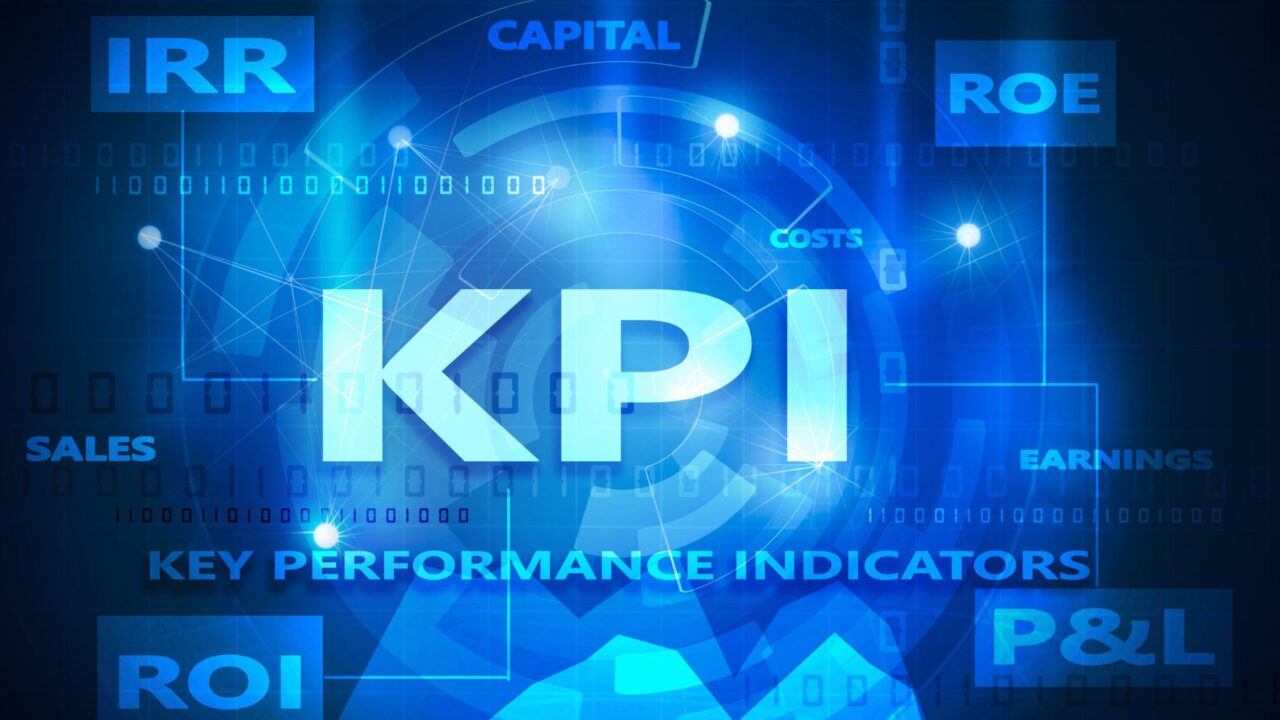Sales KPIs are critical for evaluating key performance indicators, giving sales performance a quantitative measurement, and guaranteeing alignment with more general corporate objectives. Teams can make strategic decisions, promote a continuous improvement culture, and optimize resource allocation by routinely evaluating sales KPIs.
KPIs that are precise and quantifiable improve motivation and responsibility while providing insightful information about consumer behaviour, directing marketing and sales activities and assessing the return on investment for different projects.
7 Sales KPIs for Sales Teams to Track
Sales KPI is an important aspect of tracking the performance of the business. Let’s understand those top 7 important KPIs for the sales team to track.
1. Customer Lifetime Value
Calculate customer lifetime value (CLV) –
Customer lifetime value = Gross margin % x retention rate x average revenue per customer.
Sales KPIs, such as Customer Lifetime Value (CLV), are crucial metrics for assessing the expected revenue over the entire customer relationship. This key performance indicator guides businesses in understanding revenue-generating customer segments, optimising acquisition costs, and gauging the success of building trusting, value-first, and loyal customer relationships. CLV serves as a clear indicator within the sales KPI framework, reflecting the team’s effectiveness in driving upsells, cross-sells, renewals, and ensuring predictable revenue.
2. Retention and Churn Rates
Calculate Retention rate and churn rate –
Retention rate = ((Number of customers at the end of the period – number of customers acquired during the period) / starting number of customers) x 100
Churn rate = (Number of customers lost/starting number of customers) x 100
Retention rate is the percentage of customers who keep renewing their subscription to your services or who a regular buyers of your new products. A higher retention rate shows a business’s ability to retain customers and that customers like your services or product resulting in recurring revenue and return of customers. Returning customers are valuable for businesses.
This sale KPI helps a lot in understanding the company’s capacity to retain customers.
The churn rate indicates the percentage of those customers who don’t renew their subscriptions or those who aren’t recurring customers. A higher churn rate is not good for business. It’s an indication that there’s some lack of product or service quality, offerings or business approach. The above sales key performance indicator helps a lot.
3. Average New Deal Size/Length
Calculate average new deal size –
Average new deal size = Total value from new deals / Number of deals
It helps to understand aspects of the business sales process and trends in the sales pipeline.
This sales KPI is crucial in gaining information about the effectiveness of your sales operations and financial situation. The length of time it takes to complete new agreements and their average size is evaluated by this sales KPI.
To support long-term development and profitability, your sales team can enhance overall sales performance, capitalize on high-value opportunities, and fine-tune tactics with the support of this sales KPI by performance tracking and optimizing it.
4. Customer Acquisition Cost (CAC)
Calculate Customer Acquisition Cost –
CAC = Cost of sales + Cost of marketing / New customers acquired
The amount of money a business spends to acquire new customers is the customer acquisition cost.
Businesses must track this sales KPI to evaluate the effectiveness and long-term viability of their marketing initiatives. Cost-effectiveness is shown by a decreased CAC, whereas process optimization in sales or marketing may be indicated by a growing CAC. Finding the ideal balance in CAC guarantees a strong return on investment and supports a company’s expansion and general financial health. A careful watch on CAC is essential for organizations navigating the ever-changing environment of customer acquisition as it helps them make well-informed decisions and maximize their resources for sustained success
5. Annual contract value (ACV)
Calculate Annual contract value –
ACV = Total contract value / Total number of years in contract
Upselling and cross-selling increase annual contract value. A high ACV indicates the business is profitable and doing well financially.
A high ACV suggests the capacity to close bigger sales, which boosts income streams considerably. This sales KPI is frequently used by sales teams to create goals and coordinate tactics to maximize contract values and promote long-term company success. By keeping a regular eye on ACV trends, teams may gain important insights into how well their sales efforts are working and can adjust their strategies to optimize long-term contract values and overall profitability.
6. Sales Per Rep (SPR)
Calculate Sales Per Rep –
Sales Per Rep = Total sales / Number of sales made by a representative
With the help of this sales key, businesses can set reasonable sales goals, optimize their sales methods, and manage resources efficiently. A salesperson’s capacity to generate revenue is indicated by high SPR values; on the other hand, a drop in this measure may call for a more thorough investigation of elements like lead quality, sales procedures, or training requirements. Businesses may optimize revenue creation, improve team effectiveness, and fine-tune their sales processes by utilizing Sales per Rep as a sales KPI. Performance tracking gets easy with this sales KPI.
7. Conversion rate
Calculate conversion rate –
Conversion rate = Total conversions / Total visitors
Conversion rate sales KP plays a crucial role in defining the profitability of the business. Lead generation is the marketing’s responsibility.
Conversion rate is a pivotal sales KPI, conversion rate calculates the proportion of leads that become customers by effectively converting them, indicating how effective the sales process is. By keeping track of this KPI, firms may gain valuable insights that help them improve their sales strategies and make the most use of their resources for increased success.
Conversely, a poor conversion rate suggests that the sales funnel or customer interaction strategies may need some work. At the end of the day, increasing sales performance and accomplishing organizational goals depend heavily on a thoroughly examined conversion rate.
What sales KPI dashboards should you use?
An essential tool for understanding intricate sales data and promoting business development is a sales KPI dashboard. Custom dashboards provide a complete perspective of sales and general business health that goes beyond simple numerical displays, especially when they are coupled with an easy-to-use CRM. A Pipeline Dashboard that allows sales managers to watch the development of individual representatives. Performance and Stage Analysis Dashboards provide sales operations teams with comprehensive information about completed transactions and the sales process, allowing them to make strategic suggestions for improved team performance.
Conclusion
Sales KPIs play a critical role in supporting strategic decision-making, continual improvement, resource optimization, and performance evaluation while guaranteeing alignment with company objectives. Accurate and quantitative key performance indicators (KPIs) boost employee motivation, offer consumer behaviour insights, and evaluate return on investment. Comprehensive insights into sales performance and overall business health are provided by key performance indicators such as Customer Lifetime Value, Retention and Churn Rates, Average New Deal Size/Length, Customer Acquisition Cost, Annual Contract Value, Sales Per Rep, and Conversion Rate. Using sales KPI dashboards offers a comprehensive perspective that supports decision-making and strategic suggestions for improved team performance, particularly when coupled with a CRM. In summary Sales KPI for the sales team is an important aspect to track.


